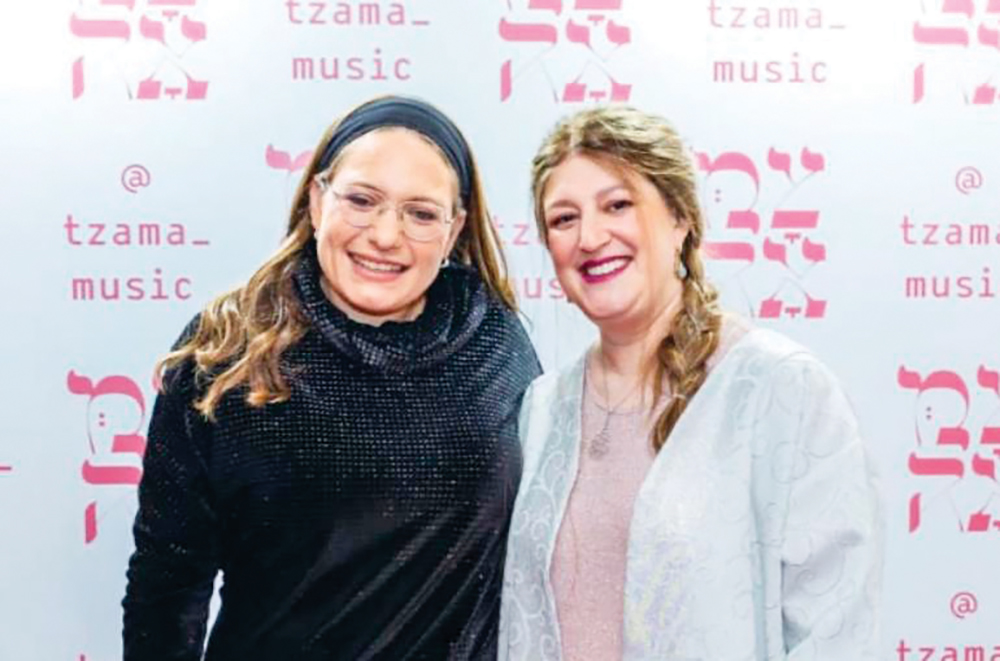
The Secret Revolution
Recently, I asked fellow speakers if they shared my perception: Lectures given before October 7 are markedly different from those delivered afterward. Today’s talks are transformative—we are all on a higher plane of understanding. We’ve collectively undergone a profound educational journey since Simchat Torah. Our interactions are now deeper, resonating on a soul level as we seek to learn and gain strength together, particularly with the younger generation—the emerging leaders of the Jewish community.
In one lecture for young people, I presented “pictures of victory,” showcasing small moments of light, justice and strength. These moments embody Israeli and Jewish pride. I told the audience that to achieve a final victory, we must recognize and celebrate these small successes along the way. The goal is to not just view these images but to adopt this mindset and actively seek out and amplify such moments in our lives.
The next day, I received a message from a soldier named Yishai Turgeman. He shared a photo of a group of soldiers putting on tefillin together, accompanied by a moving explanation: “This is our victory picture! Noam Ramati, our commander, was with us in combat and couldn’t put on tefillin all day. As the sun set, all the soldiers felt his sorrow. For the first time since his bar mitzvah, he was unable to put on his tefillin. The tefillin were only a few meters away, but it was forbidden to move to them, let alone put them on. The next day, all the soldiers—even those who hadn’t worn tefillin since their bar mitzvah—asked to put on tefillin with him, one after the other.”
Different moments of spirituality also occur throughout the year. On Erev Pesach this year, I met a group of students in Jerusalem who come to study Judaism regularly. Initially attracted by the scholarship, Shabbat meals and trips, these students now find Judaism to be the most meaningful subject in their lives. One student, holding a Tanach, said, “How would I get through this period without studying this week’s Torah portion and realizing that I am part of a great story? It’s the best commentary you can get, better than any news release.”
Learning is not just about knowledge—it’s also about action. At that Erev Pesach meeting, we discussed freedom. Through a series of lessons, they learned for the first time that true freedom in Judaism is not just freedom of choice. It is about becoming the best and truest version of oneself. A slave constantly worries about their own needs, which is not true freedom. True freedom involves caring for others and understanding our connection to fellow Jews, especially those in need.
One student, encountering this concept of freedom for the first time at age 26, suggested an initiative: to clean homes for the elderly, the needy and families whose fathers were drafted into the reserves. This initiative quickly took root. Students who might not have cleaned their own homes for Pesach last year, now volunteered to clean strangers’ homes, recognizing that these people are not strangers—they are brothers.
I had the privilege of spending a recent Shabbat in Ir HaBahadim, the IDF’s main training base near Yerocham. I met over a thousand future commanders who see themselves as the “correction generation,” the generation that will mend what was broken on Simchat Torah. One of them told me, “It’s a mistake to focus solely on October 7, as if everything began and ended there. Our story is much broader, with a history spanning thousands of years and an eternal future.”
These stories may not make the main headlines, but they represent a quiet revolution occurring throughout the Jewish world. Israel’s Next Generation (INEXTG) plays a crucial role in this movement, working closely with young people. It is a privilege to be part of this revolution and to witness these significant, yet often hidden, historical processes.
Helping One Another Find the Way
Ayelet Malka from northern Israel shared that residents of the north have been driving for a long time without Waze and without Google Maps. “The last time I checked, my location was in Beirut,” she said. “It’s annoying, it’s difficult, but it has changed us.

(Courtesy of Ayelet Malka)
“We see someone walking on the sidewalk and, just like in the old days, we ask them, ‘Excuse me, how do I get to the mall?’ This has happened to me a lot recently. My attitude towards my surroundings has changed. I stop, I help others, I ask others for help.
“Yesterday, in the middle of an interchange, a woman stopped next to me asking for directions. All traffic halted and no one honked until I finished explaining to her exactly where she needed to go.
“Sometimes I just feel like sticking my head out the window and asking people I see: ‘Hey guys, I’m from around here. Does anyone need directions how to get somewhere?’ I’m sure we’ll get back to Waze, but in the meantime, what a transformation! People are happily helping each other understand the right way to go. That’s how we bring redemption.”
The 15th of Av—What Happened on This Day?
From the saddest day of the year, Tisha B’Av, we transition sharply to the happiest day, Tu B’Av (the 15th of Av). Chazal recount various uplifting events of connection and reconciliation that occurred on this day, some of which directly address the sorrow and destruction of Tisha B’Av.
One such event is the sin of the spies, which took place on Tisha B’Av. The spies returned from the Land of Israel filled with despair, convincing the people that their journey was futile. As a result, God decreed that that generation would perish in the desert and never enter the Land of Israel. Thirty-eight years later, on the 15th of Av, the dying ceased. This day has since become one of joy and feasting, marking the end of the Israelites’ desert wandering and the beginning of their preparations to enter the Land of Israel.
On the 15th of Av, long after settling in the Land of Israel, Chazal permitted intermarriage between different tribes, ending the divisiveness caused by previous restrictions. Later, on the same date, the tribe of Binyamin was also allowed to intermarry with other tribes, a prohibition that had been in place following the incident of the pilegesh ba’giva (Shoftim 19–21).
King Yerovam Ben Navat split the kingdom into Israel and Yehuda, forbidding his subjects from making pilgrimages to Jerusalem, which was in the region of Yehuda. This decree lasted for generations until it was rescinded on the 15th of Av. From that point on, people from Israel were allowed to join those from Yehuda in celebrating the three pilgrimage festivals in Jerusalem.
During the time of the Beit Hamikdash, the 15th of Av marked the completion of tree felling for kindling wood for the altar, a mitzvah celebrated with festivity.
On Tisha B’Av, the city of Beitar was captured by the Romans, resulting in a massacre of its Jewish inhabitants. Their bodies remained unburied by the order of Emperor Hadrian. Years later, a new emperor allowed the burial of these bodies, and this permission was granted on the 15th of Av.
Young maidens of Jerusalem would go to the vineyards on this day to find a shidduch. “No days were as festive for Israel as the 15th of Av and Yom Kippur” (Mishna Taanit 4:8). Today, Tu B’Av remains a popular date for weddings.
In Kabbalistic, Hasidic and ethical traditions, the 15nth of Av marks the beginning of the teshuva process, starting half a month before Elul. Some begin their soul-searching on this day, as nights lengthen and nighttime Torah study increases. It is also customary to start wishing others the traditional New Year blessing: “May you be inscribed and sealed in the Book of Life.”
These events weave a history of mourning and rejoicing, with the 15th of Av highlighting our moments of consolation and renewal.
Sivan Rahav Meir is a primetime news anchor on television and radio. Her “Daily Thought,” translated into 17 languages, has hundreds of thousands of followers on social media. She has a weekly podcast on Tablet, “Sivan Says,” and has published several books in Hebrew and English. Sivan was chosen by Globes newspaper as Israel’s most popular female media figure and by the Jerusalem Post as one of the 50 most influential Jews worldwide. She lives in Jerusalem with her husband, Yedidya, and their five children.









